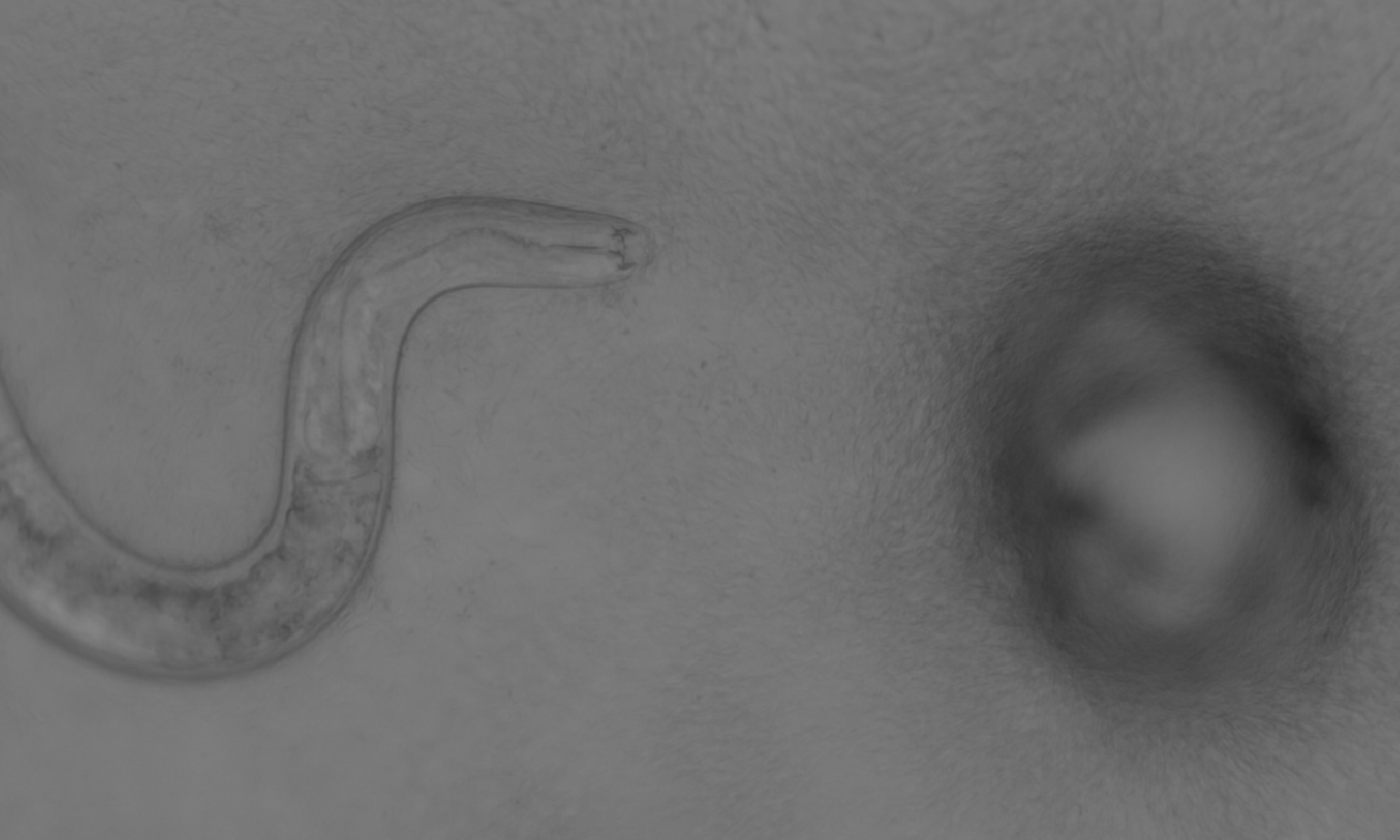(2016 – 2017) Expansion of master thesis work. The evolution of microbial cooperation continues to be a source of wonder. As theories to explain the maintenance of cooperation continue to be explored, the question of what factors are most responsible for limiting the frequencies of cheaters in natural environments remains unresolved. Using the cooperative soil bacterium Myxococcus xanthus, which among other behaviors undergoes multicellular development into spore-packed fruiting bodies upon starvation, we addressed questions about how specific the interaction between a social cheater and its cooperative parental genotype might be. Here we understand “cheating” to mean that via defection from a cooperative behavior, the cheater increases in frequency within the population.
We tested the ability of a known developmental cheater to exploit a diverse range of strains, including both natural isolates from around the world and experimentally evolved strains, the latter being much more closely related to the cheater than the natural isolates. We identified a general correlation between genetic distance and susceptibility to cheating, in that the cheater was able to exploit some of the evolved strains but none of the natural isolates. However, the cheater was unable to exploit some of the evolved strains, indicating that in this organism small genetic distances may suffice to disrupt cheating.
In addition, we explored the robustness of the above-mentioned cheater phenotype to changes in the genetic background in which the respective cheater mutation resides. The phenotype of this known cheater is caused by a mutation in the csgA gene, so we introduced a similar mutation disrupting csgA into several transformable natural isolates with different genetic backgrounds. None of the transformants demonstrated a cheating phenotype nor showed as drastic a decrease in developmental proficiency, and there was significant variation among the strains tested in the effects of the same mutation. This suggests that epistatic effects may have a strong impact on the phenotype created by potential cheater mutations. In this way, cheating may be constrained not only by the specificity of cheaters’ interactions with cooperator genotypes but also by the complexity of genotype-to-phenotype mapping across genetic backgrounds. The genetic diversity of cooperators may be one factor promoting their persistence.
Papers:
- Schaal, K. A., Yu, Y. T. N., Vasse, M., Velicer, G. J. (2021) Allopatric divergence limits cheating range and alters genetic requirements for a cooperative trait. in review. preprint: https://doi.org/10.1101/2021.01.07.425765.
(2016) Master thesis: “Mutations in csgA do not necessarily turn Myxococcus xanthus natural isolates into cheaters.” Cheating is an aspect of cooperative social behaviors among microbes which continues to somewhat confound research into the population dynamics of bacteria in the wild. Cheating, or opting-out of a cooperative behavior in a manner that increases individual fitness, has been discovered in many permutations and is proposed to be ubiquitous among social organisms. Several cheater strains of the sporulating cooperative soil bacterium Myxococcus xanthus are known which have achieved a cheater phenotype through a difference from their cooperative parent of only one or a few mutations, which leads to the prediction that cheater phenotypes of M. xanthus, being relatively easy to achieve, are present or common in the wild. For this study, I considered whether the genetic background in which a potential cheater mutation arises affects the phenotype the mutant strain presents – that is, whether there might be epistatic effects. I focused on the developmental gene csgA, as a mutation in this gene has been shown to cause cheating in a lab strain. I constructed four mutants of M. xanthus via plasmid insertion in the csgA gene. I assayed these strains for pure culture sporulation ability and for ability to be complemented by or to cheat on their cooperative parents. Mutants showed significant developmental defects in pure culture compared to their parents. However, while they were generally complemented in mixture, I did not see significant cheating. This suggests that in natural populations, it may be difficult for cheater phenotypes to arise due to the influence of genetic background on potential cheater mutations.
Recommended reading:
- Velicer, G. J., Kroos, L. & Lenski, R. E. Developmental cheating in the social bacterium Myxococcus xanthus. Nature 404, 598–601 (2000).
- Travisano, M. & Velicer, G. J. Strategies of microbial cheater control. Trends Microbiol. 12, 72–78 (2004).
- Fiegna, F. & Velicer, G. J. Competitive fates of bacterial social parasites: persistence and self-induced extinction of Myxococcus xanthus cheaters. Proc. Biol. Sci. 270, 1527–34 (2003).
- Kraemer, S. A., Wielgoss, S., Fiegna, F. & Velicer, G. J. The biogeography of kin discrimination across microbial neighborhoods. Mol. Ecol. 4875–4888 (2016). doi:10.1111/mec.13803
- Rendueles, O. et al. Rapid and widespread de novo evolution of kin discrimination. Proc. Natl. Acad. Sci. 112, 9076–81 (2015).


